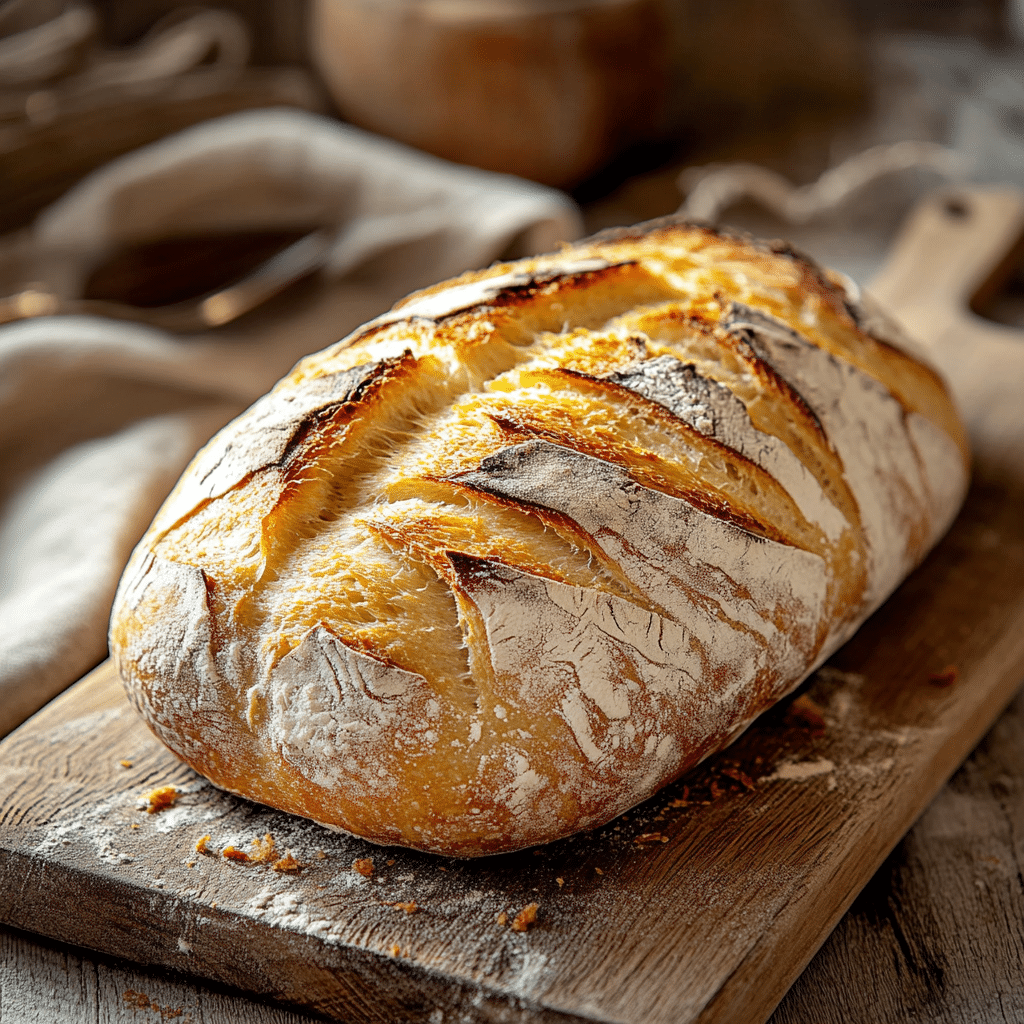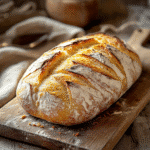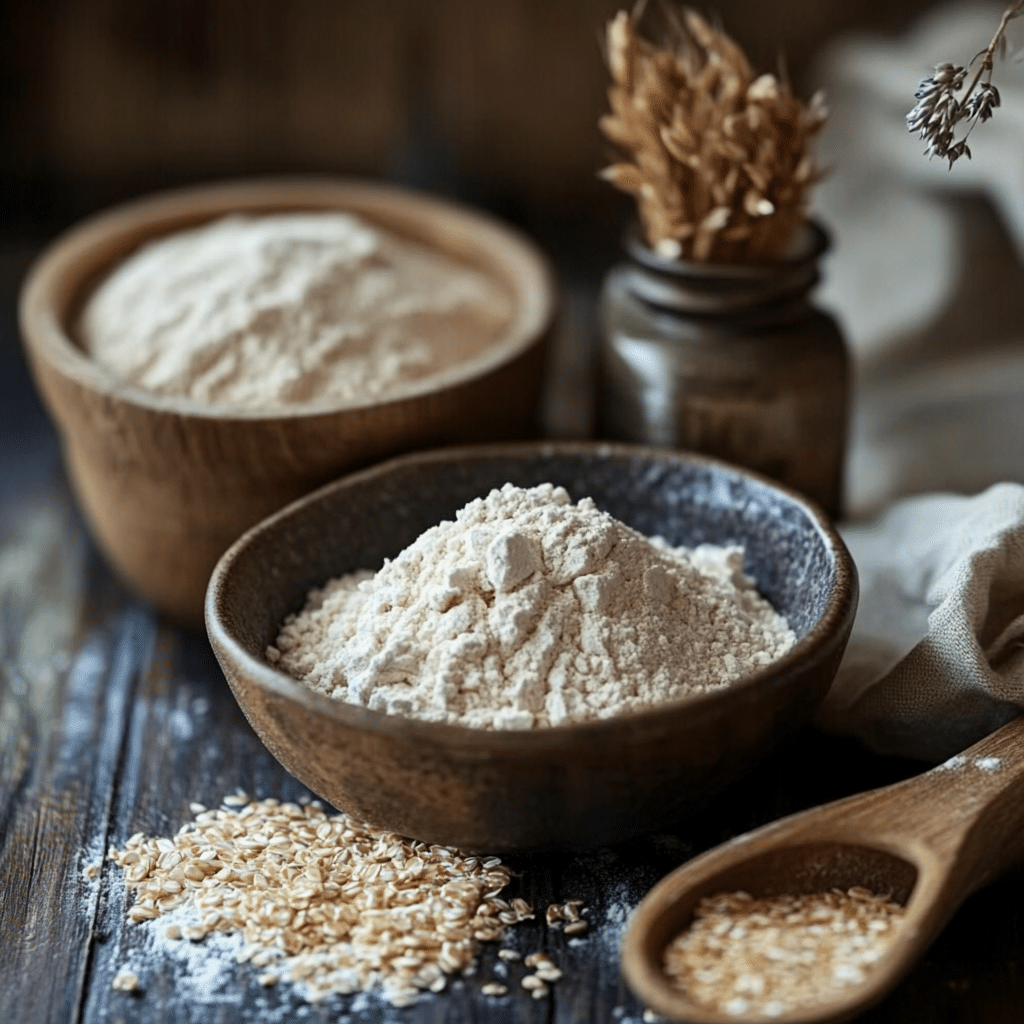If you’ve been dreaming of a crusty, soft, and flavorful loaf of no knead gluten free bread, you’re in the right place. Baking bread at home has never been easier—or more accessible for those avoiding gluten. This comprehensive guide will walk you through the science, ingredients, process, and secret tricks to mastering the best gluten free bread without kneading.
You’ll learn why certain gluten-free flours work better than others, how binders like psyllium husk mimic gluten’s magic, and why this no-fuss method is a game-changer. Whether you’re newly gluten-free or just tired of crumbly store-bought loaves, this article covers every detail to help you bake with confidence.

Check out Does Pink Salt Help in Weight Loss? A Complete Guide Backed by Facts for another kitchen transformation idea.
Table of Contents
Table of Contents
Understanding No Knead Gluten Free Bread
What Is No Knead Gluten Free Bread?
At its core, no knead gluten free bread is exactly what it sounds like: a gluten-free loaf that doesn’t require kneading. Instead of traditional gluten structure formed by kneading, this recipe uses hydration, binders, and time to build the dough’s structure and hold.
Since gluten can’t do the heavy lifting in these recipes, we depend on a unique blend of gluten-free flours and ingredients like psyllium husk to create texture. It’s perfect for people who want homemade bread without the hassle.
Why No Knead Bread Matters for Gluten-Free Bakers
For anyone baking gluten-free, bread can be the biggest struggle. Most gluten-free bread falls short—either crumbly or dense. With the no knead gluten free bread method, you get a moist center and crunchy crust using just a bowl and spoon.
This hands-off method offers consistency and ease—two things many gluten-free bakers struggle with. Plus, there’s no need for expensive mixers or complicated steps.
Discover great ideas like Butterfly Pea: The Vibrant Herbal Powerhouse with Surprising Benefits for natural colors and antioxidants in your cooking.
Key Ingredients That Make It Work
Gluten-Free Flours That Hold Up Best in No Knead Recipes
Not every gluten-free flour is suitable for no knead gluten free bread. You need the right combination of whole grain flours and starches. The goal is a blend that soaks up moisture, creates structure, and keeps the crumb light.
Top flour options for your gluten-free bread include:
- Brown rice flour
- Sorghum flour
- Teff or millet
- Tapioca or arrowroot starch
- Oat flour (certified gluten-free)
Using a pre-made gluten-free flour blend specifically for bread baking can save time and deliver great results.
The Science of Binders: Psyllium Husk, Xanthan Gum, and More
To get a loaf that holds together without gluten, binders are a must. For no knead gluten free bread, the best choice is often psyllium husk powder. It absorbs water and becomes gel-like, helping trap air and improve the dough’s structure.
Other binders:
- Xanthan gum (small amounts work best)
- Chia or flaxseed gels
- Guar gum (less common but effective)

No Knead Gluten Free Bread: Master the Easiest Homemade Loaf
- Total Time: ~13–19 hours
Ingredients
3 cups gluten-free flour blend
1.5 tsp salt
2 tsp psyllium husk powder
½ tsp instant yeast
2 cups warm water
Instructions
Mix all dry ingredients in a bowl.
Add warm water and stir until sticky dough forms.
Cover and let rise overnight (12–18 hours).
Transfer to Dutch oven, score the top.
Bake at 450°F for 45 minutes covered, then 15 uncovered.
Let cool fully before slicing.
Notes
Use parchment paper for easy cleanup.
Add herbs, garlic, or seeds for extra flavor.
- Prep Time: 10 minutes
- Cook Time: 60 minutes
The Step-by-Step Baking Process

Mixing Without Kneading: How It Works
In a no knead recipe, all ingredients go into one bowl. Stir them together with a wooden spoon until a wet dough forms. There’s no kneading involved—just patience. Hydration and rest time replace muscle work.
Once the dough rests (usually overnight), the flours absorb moisture, the binders activate, and a naturally structured dough forms. This hands-free method is a game-changer for busy home bakers who want a dependable no knead gluten free bread every time.
Proofing, Shaping, and Baking: Tips for Best Results
Once rested, transfer your dough into a parchment-lined Dutch oven or loaf pan. Let it sit at room temperature for 30–60 minutes before baking. Bake at 450°F for 45–60 minutes, adjusting for your pan and oven.
Looking for inspiration? Try Pistachio Butter – The Creamy Superfood You Need in Your Pantry—a rich, protein-packed topping for your fresh bread.
Solving Common Challenges in Gluten Free Baking
Why Gluten-Free Bread Tends to Be Dense
One of the top complaints with gluten free baking is dense bread. That’s because without gluten, it’s harder to trap gas and create structure. In no knead gluten free bread, using psyllium husk and proper hydration can solve that.
Tips:
- Always weigh ingredients for consistency
- Let the dough rest long enough to absorb moisture
- Don’t skip the steam—bake in a covered pot for crust
Cracking the Moisture and Texture Balance
Moisture management is tricky. Too dry and your bread crumbles. Too wet and it’s gummy. The ideal no knead gluten free bread has a tacky, sticky dough—but not runny.
Balance tip: Start with 1 cup of water per cup of flour, then adjust as needed. High-altitude or humid environments may require tweaks.
Tools & Equipment for Better No Knead Results
Dutch Oven vs. Loaf Pan: Which to Use and Why
A Dutch oven is the ultimate tool for making no knead gluten free bread. Its thick walls and lid trap steam and boost oven spring. You get a crunchy crust and beautiful golden color.
Loaf pans, while easier for slicing, don’t offer the same artisan texture but are still a good choice for sandwich-style loaves.
Thermometers, Mixers & Other Handy Tools
While you can mix by hand, a stand mixer makes larger batches easier. An instant-read thermometer ensures the internal temperature hits 205°F, meaning your no knead gluten free bread is baked through.
Essential Tools:
- Dough scraper
- Digital scale
- Parchment paper
- Covered baking vessel
Creative Flavor Variations to Try
Herbed Garlic Loaf, Cinnamon Raisin, and More
Once you nail the base loaf, it’s time to get creative. Flavor your no knead gluten free bread with herbs, spices, or even fruits for added excitement.
Popular Variations:
- Rosemary Garlic
- Jalapeño Cheddar
- Cinnamon Raisin
- Sun-Dried Tomato and Basil
Adding Seeds, Nuts, or Cheese: How to Get It Right
When adding mix-ins, always fold them in after the dough is mixed but before the long rest. Too much of any one ingredient can weigh the loaf down.
Add up to:
- ½ cup cheese
- ¼ cup nuts/seeds
- 1–2 tsp spices
Don’t miss our Quick & Easy Recipes to build an entire meal around your freshly baked bread.
Storage, Freezing, and Reheating Tips
Keeping Gluten Free Bread Fresh Longer
Because gluten-free breads lack preservatives and structure, they tend to dry out faster than wheat-based loaves. But with the right storage, your no knead gluten free bread can stay fresh and delicious for days.
Storage Tips:
- Cool the loaf completely before storing.
- Wrap tightly in parchment, then store in an airtight container.
- Keep at room temperature for up to 2 days.
For longer storage, refrigerating is not recommended unless absolutely necessary—it dries the bread out.
Best Practices for Freezing and Toasting Later
Want to bake ahead? No knead gluten free bread freezes beautifully.
Here’s how:
- Slice the loaf before freezing.
- Use wax paper between slices to prevent sticking.
- Wrap in plastic wrap, then foil, or place in a freezer-safe bag.
When ready to eat:
- Toast slices directly from frozen.
- For whole loaves, thaw at room temperature and then reheat at 300°F for 10 minutes.
Gluten-Free Bread Nutrition and Dietary Benefits
Comparing Nutritional Profiles: GF vs. Regular Bread
While it varies by recipe, no knead gluten free bread can be a nutritious alternative to regular bread—especially for those with celiac disease or gluten intolerance.
Here’s a quick comparison:
| Nutrient | Gluten-Free Bread | Regular Wheat Bread |
|---|---|---|
| Fiber | Higher (with psyllium/oat) | Medium |
| Gluten | 0g | 3–6g per slice |
| Protein | Moderate (with seeds/flax) | Higher with wheat gluten |
| Allergen-friendly | Yes | No (wheat/gluten common) |
By adjusting your ingredients (like adding seeds or using higher-protein flours), you can boost the nutritional profile of your bread.
Low Allergen and Gut-Friendly Benefits
Beyond being gluten-free, this style of bread is easier on sensitive stomachs. Psyllium husk aids digestion, and the long fermentation process reduces anti-nutrients in grains, making your no knead gluten free bread even more gut-friendly.
This makes it ideal for people with:
- Celiac disease
- Gluten sensitivity
- IBS or leaky gut issues
- Allergies to common bread additives
Real-Life Success: User Recipes and Community Tips
Easy Gluten-Free Bread Recipes from Readers
At Easy Chic Recipe, readers love sharing their takes on no knead gluten free bread. From cinnamon-raisin breakfast loaves to savory olive-studded boules, creativity is endless.
Reader Favorites:
- “Maple Pecan Morning Bread”
- “Rosemary Sea Salt Loaf”
- “Cheddar Jalapeño Twist”
Many use chia eggs or flax meal to boost protein and binders naturally.
Tips Shared by the EasyChicRecipe Community
Some of the best baking tips come from everyday cooks:
- “Mix your dough at night and bake in the morning. The longer it rests, the better the flavor.”
- “Add 1 tbsp of apple cider vinegar for a lighter crumb.”
- “Don’t skip the parchment—it’s a lifesaver for sticky gluten-free dough!”
Learn more about Cottage Cheese Bagels Recipe – A High-Protein, Guilt-Free Breakfast—another gluten-friendly morning winner.
FAQs: No Knead Gluten Free Bread
What is the trick to making good gluten free bread?
The secret is in the hydration and structure. Use high-quality binders like psyllium husk and let the dough rest longer. A proper mix of whole grain flours and starches also creates a better crumb and crust.
What is the biggest challenge of making gluten free bread?
Structure. Without gluten, bread tends to collapse or become dense. Getting the flour blend, binder ratio, and moisture levels right is key to success—especially for no knead gluten free bread.
How to develop gluten in dough without kneading?
In gluten-free baking, you don’t develop gluten—you replace it. Psyllium husk, flax gel, and xanthan gum all mimic the elasticity and structure normally provided by gluten.
Can you make bread without kneading?
Absolutely. The no knead gluten free bread method is proof. With enough hydration and resting time, your dough develops structure naturally, giving you a light, airy texture—no elbow grease required.
Conclusion: Your Best Loaf Yet Starts Here
Baking delicious, sliceable no knead gluten free bread is totally within reach—even for beginners. With the right blend of flours, powerful binders like psyllium husk, and a simple long-rise method, you can create bakery-level loaves at home with ease.
Whether you’re gluten-free by need or by choice, there’s nothing more satisfying than pulling a golden loaf from the oven and knowing you made it from scratch—with no kneading at all.
Check out Quick & Easy Recipes for dishes that pair perfectly with your fresh-baked loaf.
